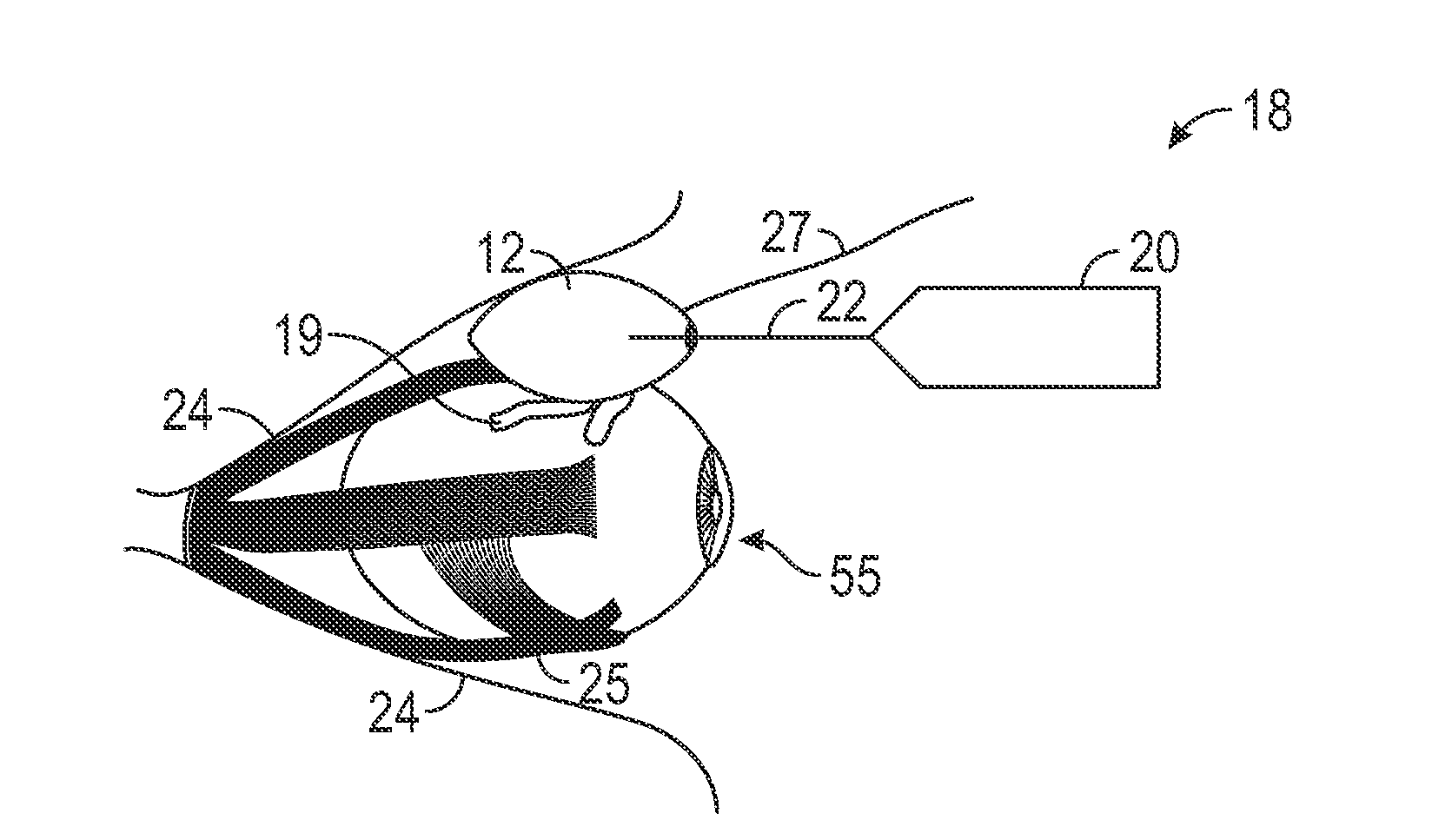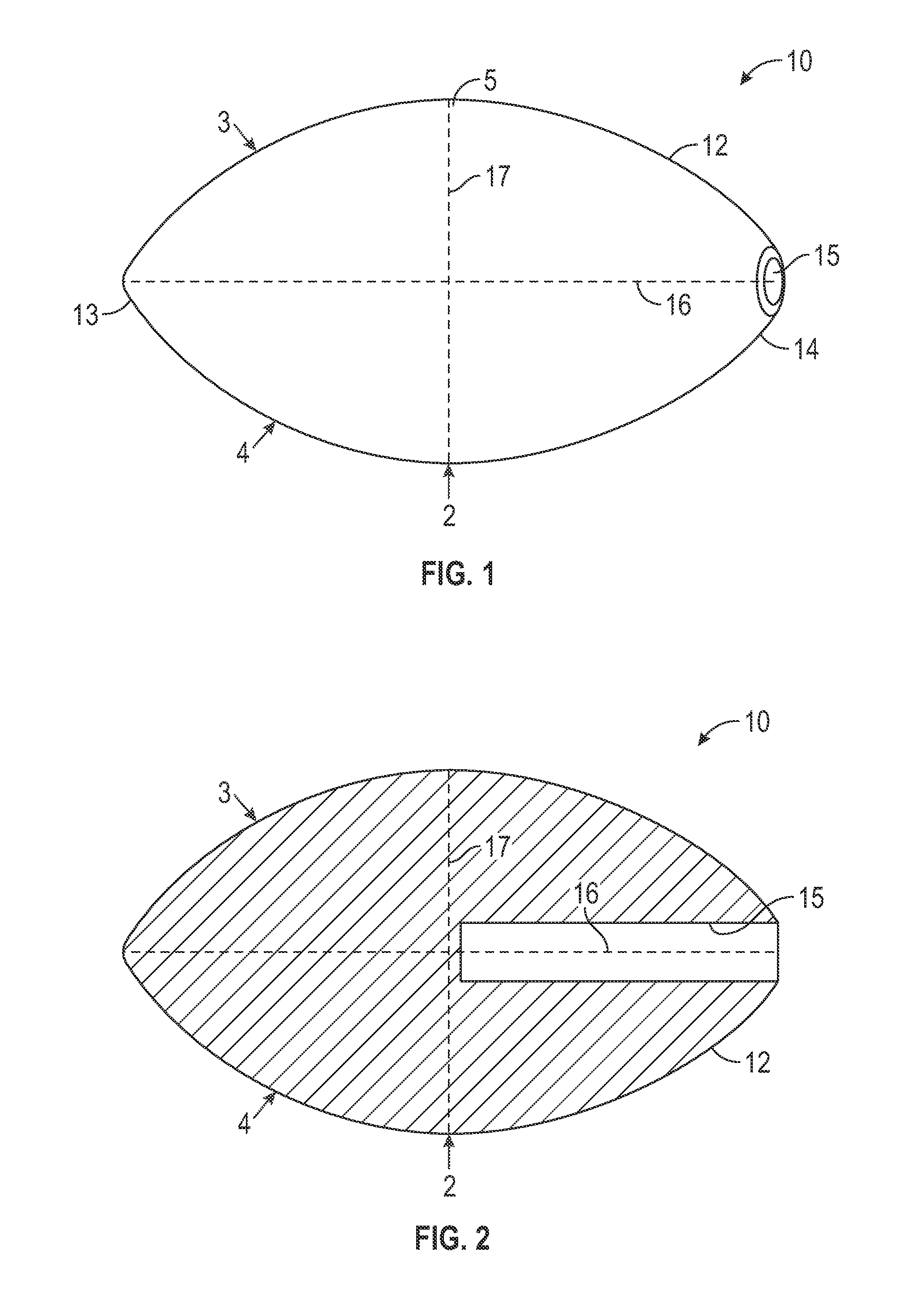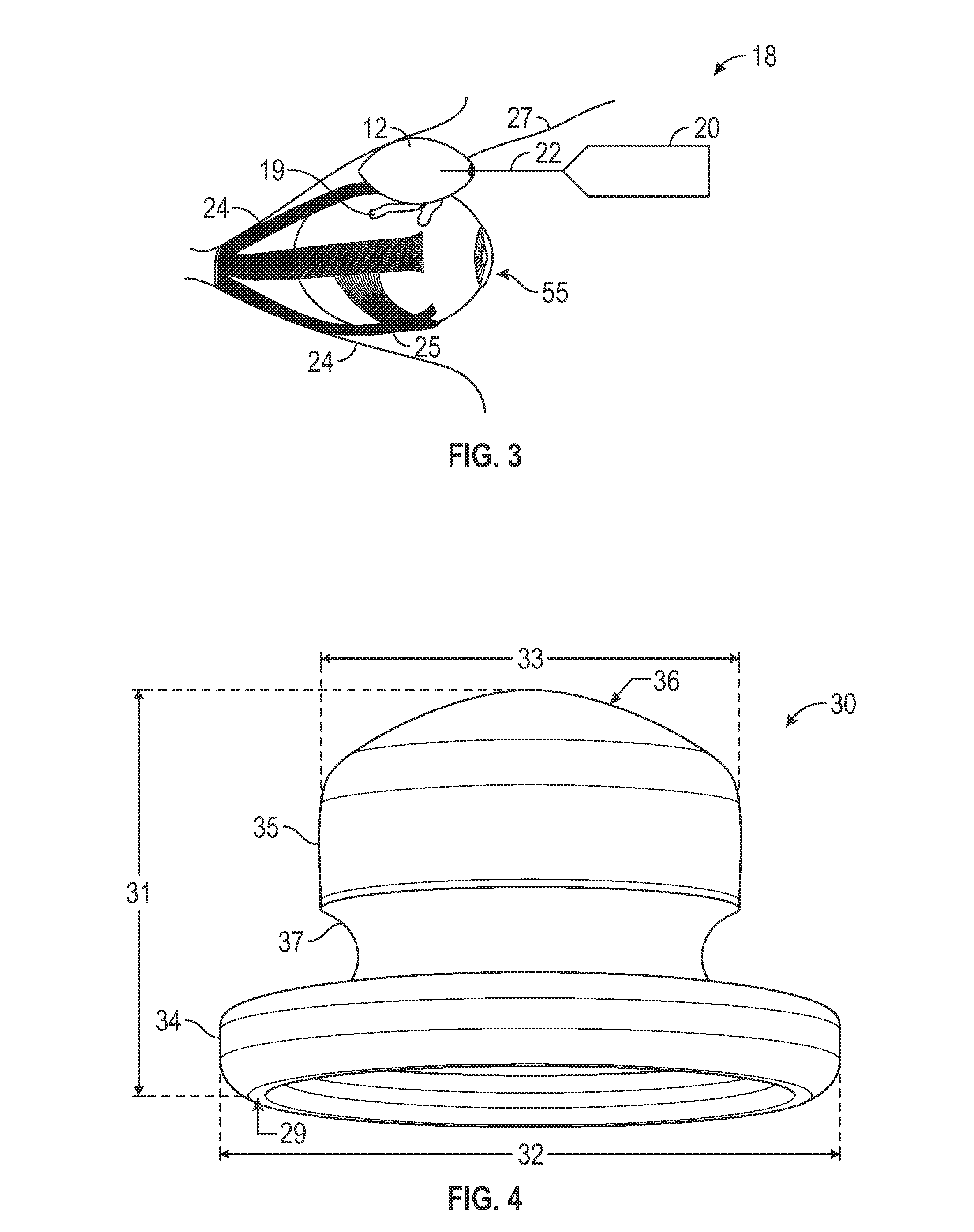Retinal repair device and method
- Summary
- Abstract
- Description
- Claims
- Application Information
AI Technical Summary
Benefits of technology
Problems solved by technology
Method used
Image
Examples
Example
[0029]FIGS. 1 and 2 illustrate a first embodiment of a retinal repair device 10 comprising a member 12 including a posterior end 13 and an anterior end 14 opposite and distal to the posterior end 13. The member 12 may include an orbital facing surface 3 and a sclera facing surface 4, opposite the orbital facing surface 3. The member 12 may include a thickened portion 5 or a portion that is thickened to indent the sclera of an eye when the retina repair device is inserted into the periocular space, for example between the sclera and the orbital wall of the eye. The orbital facing surface 3 may be configured to contact the orbital wall of an eye. The thickened portion 5 may include a sclera contacting surface 2 that contacts and indents the sclera.
[0030]In the embodiment in FIGS. 1 and 2, the retinal repair device 10 may be a football-shaped or in the shape of a prolate spheroid. The orbital facing surface 3 and the sclera facing surface 4 may form the prolate spheroid shape. The thic...
Example
[0037]FIGS. 4 to 7 illustrate a retinal repair device 30 according to a second embodiment. In this embodiment, device 30 comprises a one piece molded member of a generally “top hat” shape, having an annular rim 34 and a cylindrical or thickened portion 35. Annular rim 34 may be a hollow cylinder with a closed end and an open end. The closed end is the end adjacent thickened portion 35. Annular rim 34 may include an orbital facing surface 29 at the open end. Orbital facing surface 29 may be configured to contact the orbital wall of an eye. The edges 38 and 39 of annular rim 34 may be rounded.
[0038]Thickened portion 35 is cylinder of solid cross-section extending axially from annular rim 34. Thickened portion 35 includes an end face or a sclera facing surface 36 distal to the annular rim 34 and the orbital facing surface 29. Sclera facing surface 36 may be outwardly rounded or part spherical, such as a spherical cap. At least a portion of sclera facing surface 36 may be a sclera conta...
Example
[0053]FIG. 13 illustrates a retinal repair device 300 according to a fourth embodiment. In this embodiment, device 300 includes an elongated portion 310 and a thickened portion 320 similar to those of device 100. The shapes lengths, widths, dimensions, and features of device 300 may be the same or similar to those of device 100. Elongated portion 310 also includes a posterior end 311, an anterior end 312, an orbital facing surface 313, and a sclera facing surface 314, located opposite the orbital facing surface 313. In the embodiment illustrated in FIG. 13, posterior end 311 includes a flat surface with rounded edges between posterior end 311 and orbital facing surface 313, and posterior end 311 and sclera facing surface 314.
[0054]In the embodiment illustrated in FIG. 13, thickened portion 320 includes protrusion 322 extending from sclera facing surface 314 and is cylindrically shaped, such as a half cylinder. Device 300 includes a first wing 325 and a second wing 326 extending from...
PUM
 Login to View More
Login to View More Abstract
Description
Claims
Application Information
 Login to View More
Login to View More - R&D
- Intellectual Property
- Life Sciences
- Materials
- Tech Scout
- Unparalleled Data Quality
- Higher Quality Content
- 60% Fewer Hallucinations
Browse by: Latest US Patents, China's latest patents, Technical Efficacy Thesaurus, Application Domain, Technology Topic, Popular Technical Reports.
© 2025 PatSnap. All rights reserved.Legal|Privacy policy|Modern Slavery Act Transparency Statement|Sitemap|About US| Contact US: help@patsnap.com



